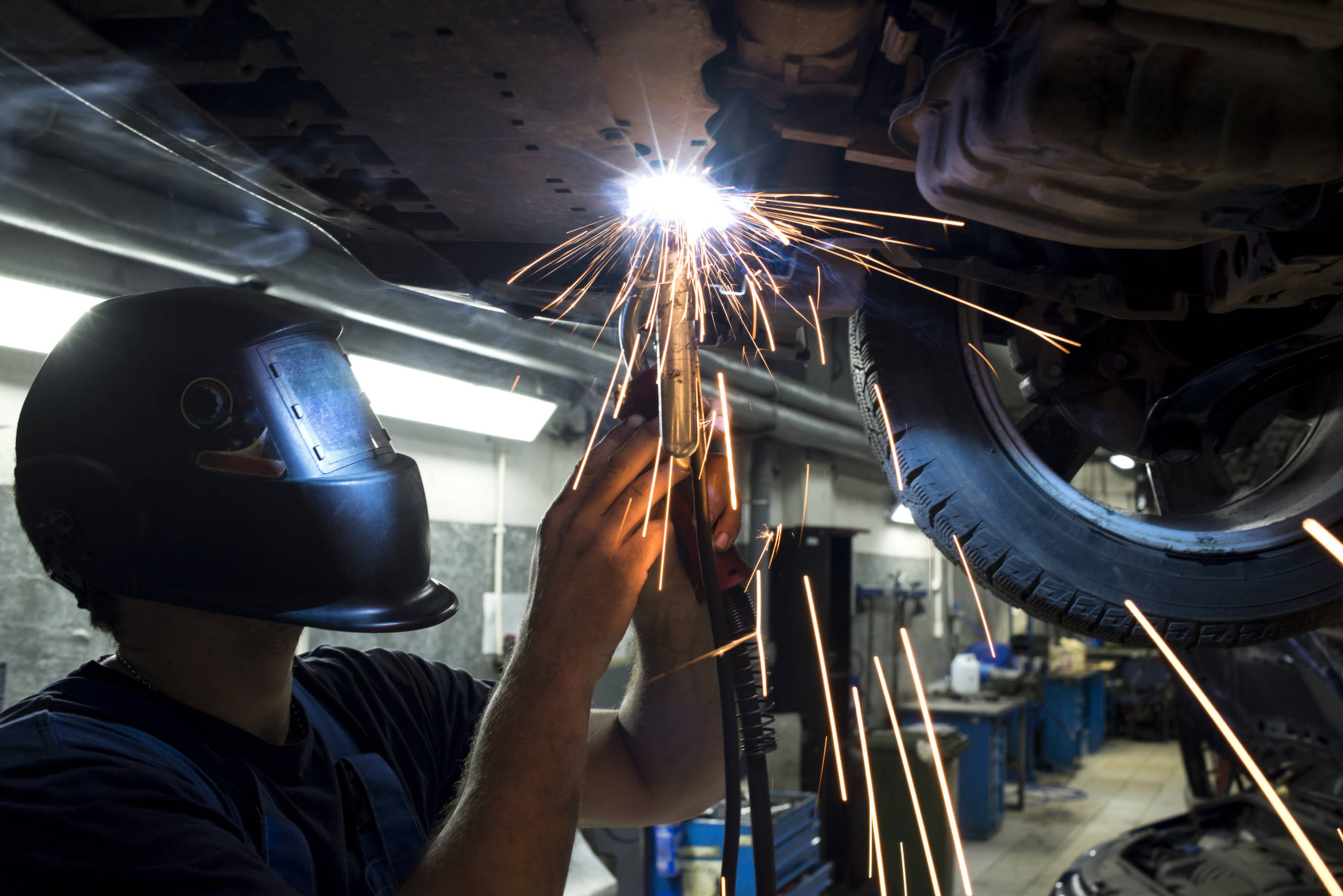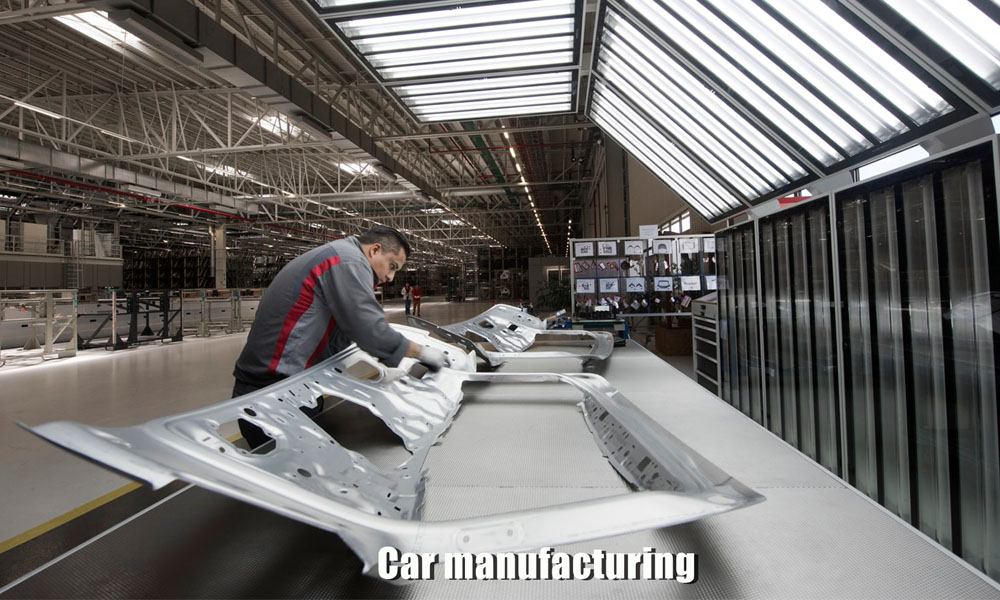Typical Welding Repair Service Issues and How to Address Them Properly
Welding repairs commonly come across a variety of issues that can jeopardize the stability of the end product. Typical issues consist of poor infiltration, porosity, and imbalance, to name a few. Each problem presents special obstacles that call for details approaches for resolution. Recognizing these issues is necessary for welders aiming to improve their abilities and outcomes. This discussion will certainly explore these common welding repair concerns and effective techniques to resolve them.
Insufficient Penetration
Poor penetration takes place when the weld metal fails to totally fuse with the base material, causing weak joints and prospective architectural failings. This issue frequently stems from not enough warmth input, incorrect electrode angle, or improper welding speed. Welders might encounter insufficient penetration due to a mistake of the required criteria for a particular product thickness or kind. Furthermore, contamination on the base product's surface can hinder effective bonding, aggravating the trouble. To address inadequate infiltration, welders must guarantee suitable settings on their tools and preserve a tidy work surface area. Routine inspection of welds is recommended to determine any kind of shortages early, enabling timely adjustments and the avoidance of endangered structural integrity in bonded assemblies.
Porosity
Porosity is a common defect in welded joints that manifests as tiny gas bubbles trapped within the weld metal. This defect can jeopardize the honesty of the weld, bring about reduced strength and prospective failing under tension. Montana Mobile Welding and Repair. Porosity typically develops from contamination, moisture, or incorrect welding methods, which allow gases to get away into the molten weld pool. To deal with porosity, welders ought to guarantee correct surface area preparation, preserve a clean functioning setting, and make use of suitable welding criteria. In addition, choosing the ideal filler product and shielding gas can reduce gas entrapment. Normal examination and screening of welds can assist determine porosity early, ensuring timely rehabilitative activities are taken, consequently protecting the high quality and reliability of the bonded framework
Misalignment
Imbalance in welding can occur from numerous elements, consisting of inappropriate configuration and thermal growth. Comprehending the source is crucial for efficient resolution. Several correction techniques are available to realign elements and assure architectural integrity.
Reasons for Misalignment
Welding imbalance commonly comes from a variety of underlying problems that can endanger structural honesty. One key cause is inappropriate fit-up of elements prior to welding, which can result in gaps and uneven surfaces. Variations in thermal expansion during the welding procedure can additionally result in distortion, especially if the materials being signed up with have various coefficients of development. Additionally, insufficient fixturing and securing might fail to hold parts securely in location, leading to activity throughout welding. Inadequately maintained devices, including welding makers and devices, may present disparities in the weld bead, more adding to misalignment. Operator mistake, stemming from inadequate training or experience, can also play a significant role in developing misaligned welds.
.jpeg?width=1200&height=675&name=Mold%20Repair%20Welding%20Image%20(1).jpeg)
Adjustment Methods Offered
Dealing with misalignment successfully needs a combination of corrective strategies tailored to the details issues available. One common technique is the use of fixtures or jigs to hold components in the correct position throughout welding, making certain regular positioning. Furthermore, preheating the products can help in reducing distortion and boost fit-up. For substantial imbalance, mechanical adjustment techniques, such as utilizing hydraulic jacks or clamps, can be employed to correct the position prior to welding. Post-weld warm treatment may likewise be needed to alleviate stress and anxieties triggered by misalignment. Lastly, careful examination and adjustment during the configuration stage can protect against misalignment issues from ending up being considerable troubles, advertising a smoother welding procedure and improving overall architectural honesty.
Distortion
Distortion is a typical challenge in welding that can emerge from various variables, including unequal cooling and heating. Recognizing the reasons of distortion is vital for carrying out efficient prevention strategies. Addressing this concern not only enhances structural stability but also improves the general quality of the weld.
Causes of Distortion
When based on the intense heat of welding, products commonly go through changes that can lead to distortion. This sensation primarily emerges from thermal development and tightening throughout the welding procedure. As the weld location warms up, the material increases; upon air conditioning, it gets, which can develop internal stresses. On top of that, uneven home heating across a workpiece can aggravate these tensions, causing warping or flexing. The kind of product also plays a significant duty; steels with differing thermal conductivity and coefficients of expansion may respond differently, bring about unforeseeable distortions. Poor joint design and inadequate fixturing can add to misalignment throughout welding, boosting the chance of distortion. craftsman welder Understanding these causes is crucial for reliable welding repair and avoidance approaches.
Prevention Techniques
Reliable avoidance strategies for distortion during welding concentrate on managing warm input and making certain correct joint layout. Keeping a constant warmth input assists to lessen thermal growth and tightening, which can result in distortion. plasma cutter welder combo Making use of strategies such as preheating the workpiece can also lower the temperature level gradient, advertising uniform heating. In addition, selecting appropriate joint layouts, such as T-joints or lap joints, can boost security and minimize stress concentrations. Applying appropriate fixturing to protect the work surfaces in position better aids in keeping positioning during the welding process. Staggered welding sequences can distribute warmth much more evenly, avoiding localized distortion. By applying these strategies, welders can greatly decrease the likelihood of distortion and enhance the general quality of their welds.
Cracking
Breaking is a common problem run into in welding repair services, usually arising from various variables such as inappropriate cooling rates, material choice, or poor joint preparation. The incident of splits can significantly compromise the integrity of the weld, bring about potential failings during procedure. To address this issue, welders have to initially evaluate the origin, making sure that materials are compatible and properly picked for the details application. Furthermore, managing the air conditioning rate during the welding procedure is essential; rapid air conditioning can cause anxiety and result in splitting. Appropriate joint style and preparation additionally add to lessening the threat. Carrying out these approaches can improve weld high quality and longevity, inevitably reducing the chance of splitting in completed weldments.

Incomplete Combination
A considerable problem in welding repairs is incomplete fusion, which takes place when the weld steel does not effectively bond with the base product or previous weld passes - Belgrade Welding. This problem can result in weak points in the joint, potentially compromising the stability of the welded structure. Aspects adding to incomplete blend consist of inadequate warm input, incorrect welding strategy, and contamination of the surface areas being joined. To address this concern efficiently, welders ought to ensure correct pre-weld cleaning and surface preparation, along with change their welding parameters to accomplish adequate penetration and fusion. Normal evaluation during the welding process can also aid recognize insufficient combination early, enabling for prompt restorative actions to enhance the total high quality of hot air welder the weld
Overheating
While welding fixings can boost structural stability, overheating provides a considerable difficulty that can bring about product destruction. Too much warmth during welding can modify the mechanical residential or commercial properties of steels, resulting in decreased toughness, increased brittleness, and warping. This phenomenon is specifically critical in high-stress applications where architectural reliability is extremely important. Determining getting too hot can involve visual evaluations for discoloration or distortion, as well as monitoring temperature level during the welding procedure. To mitigate the threats related to overheating, welders need to utilize suitable methods, such as controlling heat input, changing travel speed, and using appropriate filler materials. Additionally, executing pre- and post-weld heat treatments can assist restore product properties and improve the general high quality of the fixing, making sure long-lasting efficiency and security.
Often Asked Concerns
What Are the Typical Indicators of a Welding Issue?

How Can I Test My Welds for Quality?
To test welds for top quality, one can make use of visual assessments, ultrasonic screening, and radiographic methods. Each strategy ensures structural stability, identifies flaws, and validates adherence to specified standards, eventually improving the reliability of the welded joints.
What Security Preventative Measures Should I Take While Welding?
When welding, one need to focus on safety and security by wearing proper personal safety tools, ensuring correct ventilation, securing combustible materials away, keeping a clean office, and knowing environments to avoid accidents and injuries.
Can I Fix a Weld Without Redoing the Entire Joint?
Fixing a weld without redesigning the entire joint is possible, depending upon the damage (Belgrade). Strategies such as grinding, adding filler material, or making use of a welding procedure can effectively resolve specific problems while protecting the bordering structure
What Equipment Are Important for Effective Welding Fixes?
Vital devices for reliable welding repair work consist of a welding machine, wire brush, mill, safety equipment, clamps, and filler materials. Each tool plays a vital function in guaranteeing top quality and safety and security during the repair process. Porosity commonly occurs from contamination, wetness, or inappropriate welding strategies, which permit gases to get away right into the liquified weld pool. Badly kept equipment, consisting of welding makers and tools, may introduce inconsistencies in the weld grain, further adding to misalignment. When subjected to the intense warm of welding, products frequently undertake modifications that can lead to distortion. Fracturing is an usual issue run into in welding repair work, typically resulting from various elements such as incorrect air conditioning prices, material option, or insufficient joint preparation. A substantial problem in welding fixings is insufficient combination, which occurs when the weld steel does not appropriately bond with the base material or previous weld passes.